7 Creative Herb Garden Ideas for Growing Herbs in Containers
These creative herb garden ideas will help you find the space for growing culinary and medicinal herbs no matter how much garden you have. Growing herbs is not only easy but also fun, because they are versatile and can be planted pretty much anywhere and in anything. As long as they have plenty of sunlight, good soil, good drainage and consistent water, they will flourish.
Most herbs were originally grown in the Mediterranean region and they require well-drained, lean soils. They will do well in the ground or in containers, which work best for tender herbs that need to be overwintered indoors. Thankfully, herbs can be grown in any type of container so long as it has drainage holes and adequate soil. Select herbs that are small and slow-growing. Several kinds of herbs or a mixture of herbs and flowers can be planted in one container depending on its size.
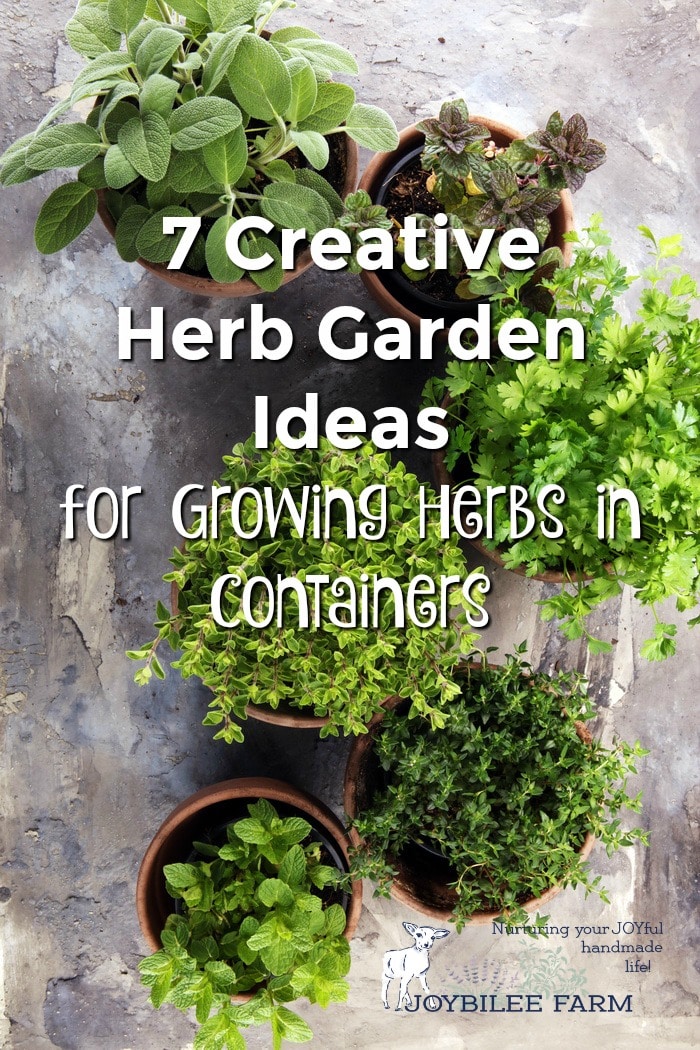
Organic fertilizer and soil nutrients
The best potting soil for your container garden is organic potting soil with an organic fertilizer in the soil mix. Plain potting soil may be adequate for getting your seeds started, but without adequate fertilizer plant growth will be stunted. Many growers who aim at organic growing will use chemical fertilizer to get the seedlings off to a strong start, but there are alternatives to chemical fertilizers.
Worm bins will turn your kitchen waste into a fertile soil amendment that can be added to your garden containers. The science of breeding red wigglers in your kitchen is for another article. Here I’ll just mention that worm-castings (poop) are the best medium for transplanting your seedlings into after the first true leaves have emerged.
If you have a small yard and access to weeds and grass clippings you can create compost that can be added to your pots to increase soil fertility and give plants the minerals that they need to grow well. Adding fish fertilizer, kelp meal, or liquid manure tea to plants during the growing season is also helpful. Many garden stores sell manure tea bags that you can steep and cool to water your container gardens with. It’s a bit more expensive than making your own manure tea, but it has been sterilized and deodorized.

Read more in the article Container Gardening in the North. Not sure which herbs to plant? Sneak one (or MANY more) of these 70 Medicinal herbs into your container garden.
Save Money with DIY Containers to Grow Herbs
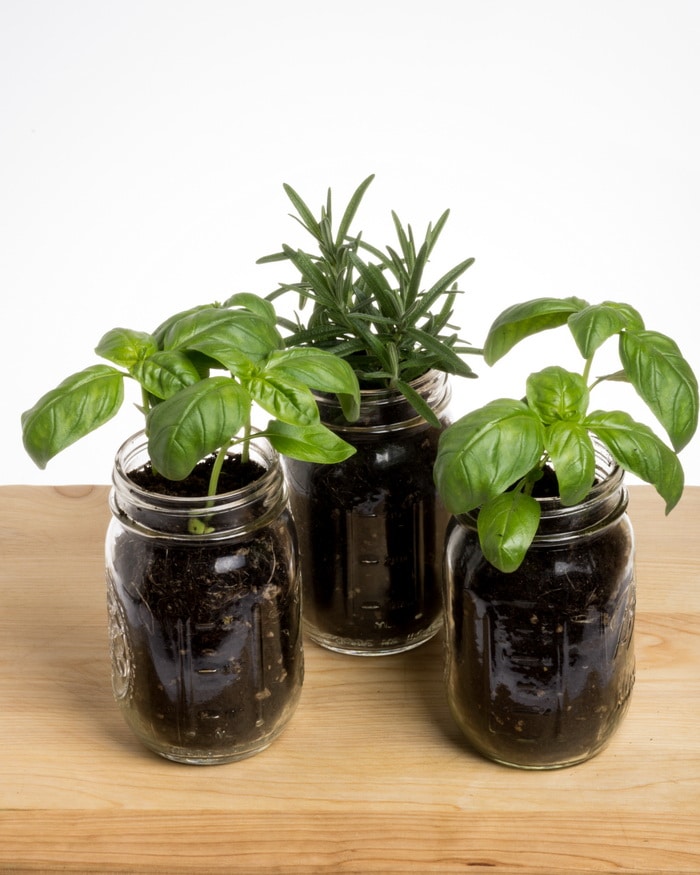
1. Mason Jars
Mason jars are a cute and decorative way to grow herbs, plus any avid gardener already has them to use for preserving. To be really effective, save the jars that have chips in the rim (those that you can no longer use for canning) and put them to work with this project.
Because you will not be able to drill holes in the glass jars, you will need a way to keep water away from the roots. Simply put a small layer of pebbles at the bottom of each jar and then place soil on top of it. This way the water can drain from the soil, sit in the pebbles and the soil will wick up the moisture it needs.
Mason jars can fit nicely on a window sill or even be added to a slab of wood with a few metal rings and screws. See how Ann at On Sutton Place makes her indoor mason jar herb garden and try it yourself.
2. Make a Gutter Garden
A ten-foot section of gutter, capped off at each end, makes a unique but effective way to grow shallow-rooted herbs like chives, thyme, garlic and spinach. First, you will need a sturdy place to secure the gutter section. This could be between two eight-foot fence posts or you could even make your own stand-alone wooden ladder. To ready the gutters, secure caps on each end and drill some holes on the bottom of the cutter to allow water to drain. Secure it to the fence, between posts and have one end slightly lower than the other. Add lightweight potting soil and your herb starts.
See how Ann at A Farm Girl in the Making makes her productive gutter garden container garden and grows lettuce.
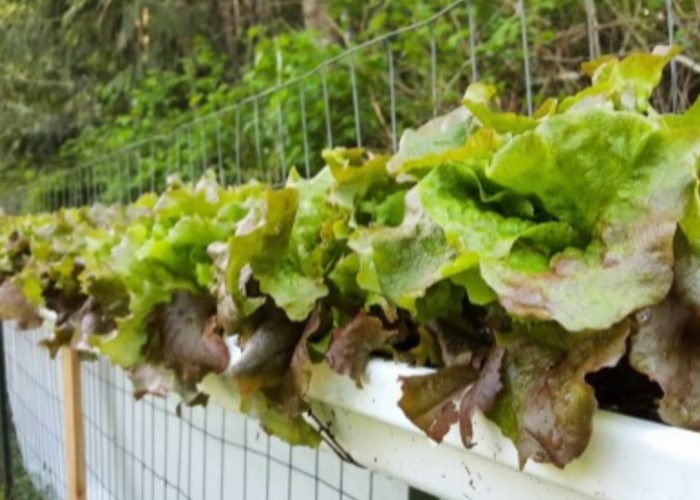
Photo courtesy of A Farm Girl in the Making
3. Plastic Bottles
This method will not win any garden design prizes, but it works as an inexpensive alternative to purchasing pots. Using plastic bottles is a great way to reduce pollution and reuse the water, soda, and milk bottles that find their way into your home. Be creative when looking for ways to alter plastic bottles for growing herbs.
A quick and easy method is to cut off the top about 2 inches down from the top cap and poke a few holes in the bottom of the remaining bottle. Make sure the holes are big enough for water to drain out a little. Next, fill the bottle with some organic soil and pot your herb starts and they are ready to go.
4. Over Door Shoe Organizer
As crazy as a shoe organizer sounds, this is a great option for those with limited space. It can easily be hung on a wall, fence or even in your kitchen. Choose a shoe organizer that has fabric that allows water to drain easily, then fill each pouch with organic soil with about an inch of space left on the top. Now all you need are your herbs.
I like this plan for a hanging herb garden from The Country Chic Cottage because she lines her pockets with coco liners, which will help to retain moisture and keep the soil from spilling out when you water. Wool batting is another moisture-holding liner that you could use. This will be especially helpful if you are planting your hanging herb garden in a place that gets a lot of foot traffic.
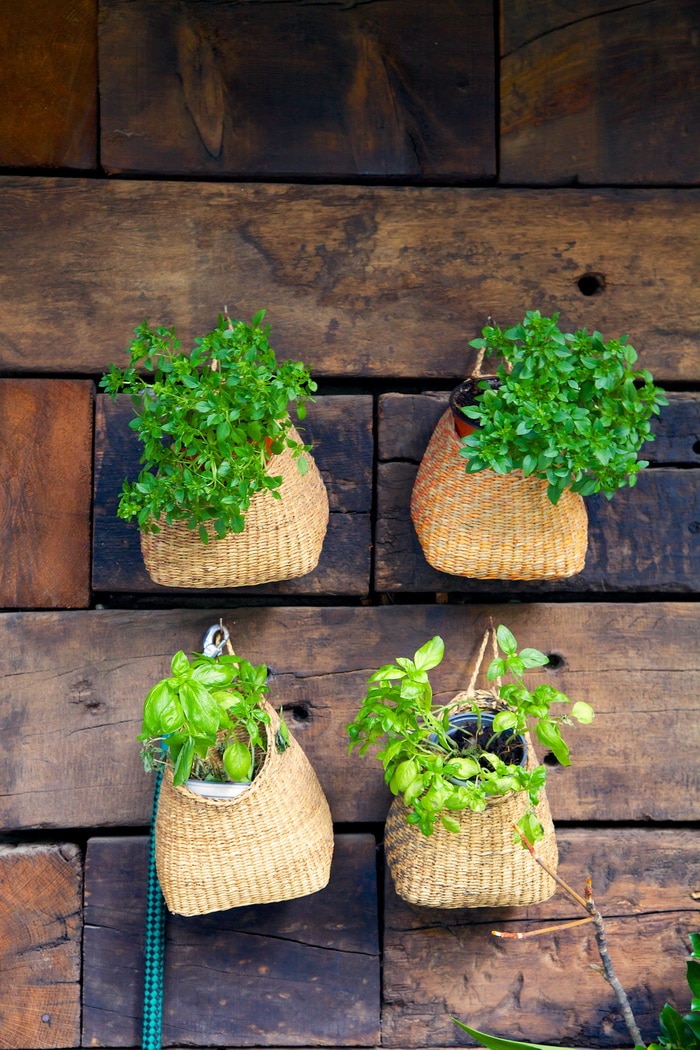
5. Tin Planters and Food Cans
We often think of the cans from food as recyclable items, but they make terrific short-term planters. Tin cans are a great option for those wanting to reduce pollution and will save you money without having to purchase plant pots.
To get the cans ready for planting:
- After you use your food can, rinse it out thoroughly and remove the label and any sticky residue left behind.
- If you will be using the can outside, punch a few drainage holes in the bottom.
- If you are planting indoors, add a layer of pebbles to allow water to drain and keep the plant roots from getting waterlogged.
- Add organic soil and herb starts and you are done.
Want something cuter than a tin can? Consider painting the can with spray paint in coordinating colours or decorate with ribbons. (I tend to go the utilitarian route myself!) See how Attainable Sustainable grows her herbs indoors with this Tin Windowsill Herb Garden.
6. Pallet Planters
I love this picture of the side garden from my friend Tanya at Lovely Greens. She uses pallets to make cute strawberry planters, she’s made her own concrete planter and I also spy an old milk crate doing double duty as a container for herbs. This goes to show that you can use found objects and still keep your container garden stylish. What other ideas does her garden give you for planting your own herbs in containers?
There are other ways to use pallets for small herb container gardens. Search Pinterest for single pallets that lean against a fence or garden wall. While it’s not suitable for indoors, you can find an out-of-the-way place to lean it on a patio. You can use Companion Planting with Herbs to Increase Biodiversity and Improve Yields.
Shelle at Rockin W Homestead has her A-Frame Pallet Planter, which has a clever pocket system that lets you grow a surprising amount of herbs in such a small space. If you have a 3×3 foot area to set up the pallets, you are golden. This book is as much a pattern as it is a how-to book. With detailed drawings and comprehensive instructions, you’ll get the hand-holding you need to be successful in implementing this inexpensive, yet productive pallet garden design. And in the end, that means more herbs for your kitchen and savings for your grocery budget, as well as peace of mind, without moving to a farm.
7. Even Plastic Tubs Can Be Useful
Plastic 18 gallon tubs are easy to obtain at the hardware store and can be transformed into self-watering containers following this system from Rachel at Grow A Good Life. If you live in a dry climate or just hate to water regularly, these are worth making.
Use them to grow herbs by simply filling them up with soil and placing them around the patio or garden. They can grow a surprising amount of vegetables and herbs and actually save space in the long run.
The list of “do it yourself” containers for growing herbs in is practically endless. Just about anything around your house can be used once you open your mind and look around.
For more herb garden ideas check out my ebook, 10 Herbs from Garden to Plate!


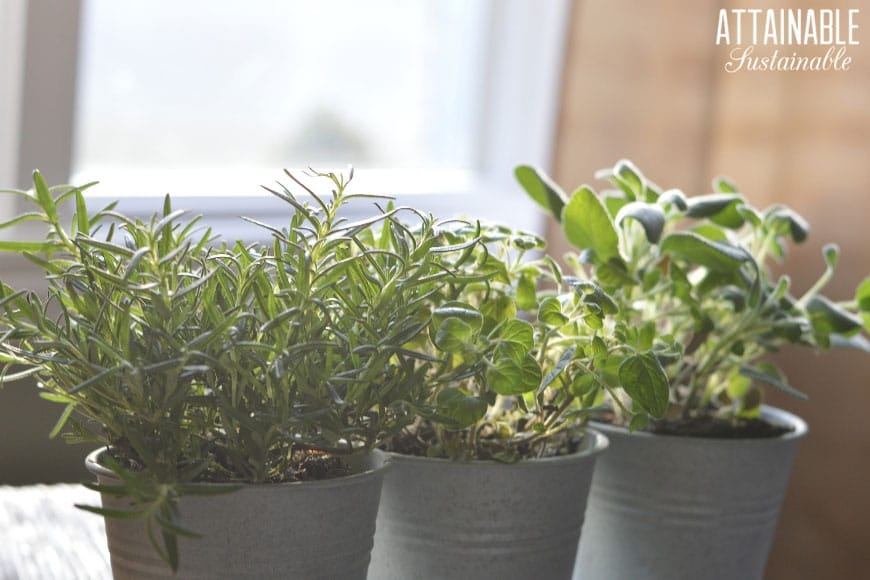
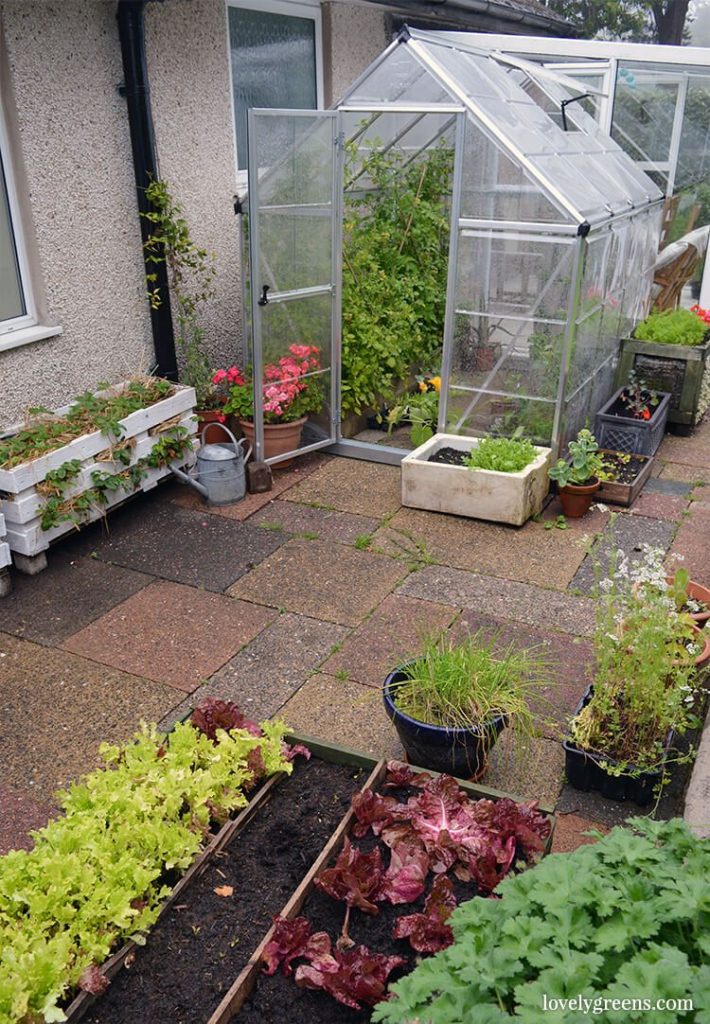
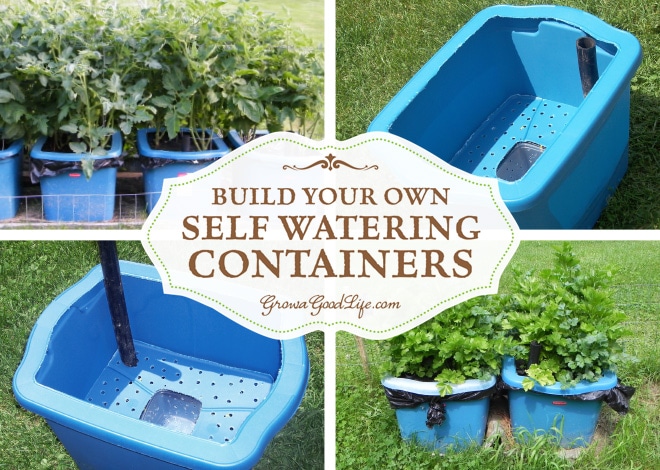
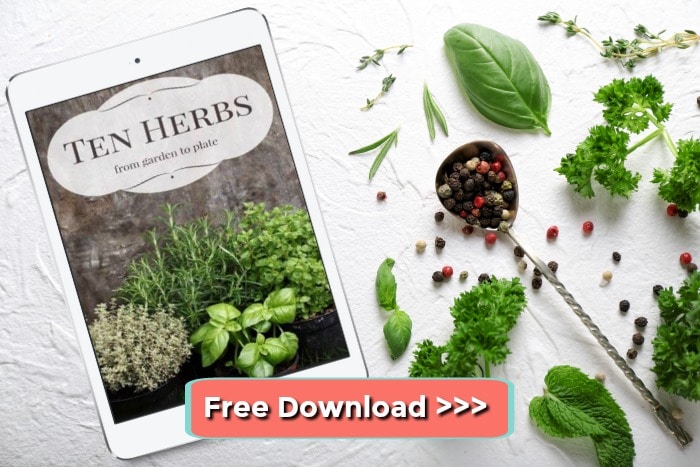

Leave a Reply